Practicing the Bridges in Mathematics Grade 4 Student Book Answer Key Unit 6 Module 1 will help students analyze their level of preparation.
Bridges in Mathematics Grade 4 Student Book Answer Key Unit 6 Module 1
Bridges in Mathematics Grade 4 Student Book Unit 6 Module 1 Session 1 Answer Key
Quimby’s Quadrilaterals
Question 1.
Quimby looked at a rectangle and said, “This rectangle is also a parallelogram.” Can a parallelogram also be a rectangle? Explain.
Answer:
Yes, as parallelogram has two pairs of parallel sides and rectangle also have two pairs of parallel sides. So parallelogram also be a rectangle.
Question 2.
Quimby’s apartment complex has a playground in the shape of a quadrilateral. The perimeter of the playground is 210 feet. The lengths of three of the sides are 50 feet, 60 feet, and 30 feet. How long is the fourth side of the playground? Show your work.
Answer:
The length of the fourth side is 70 feet.
Explanation:
Given that the perimeter of the playground is 210 feet and the lengths of three of the sides are 50 feet, 60 feet, and 30 feet. So the length of the fourth side is
P = A+B+C+D
210 = 50+60+30+D
210 = 140+D
D = 210-140
= 70 feet.
Question 3.
Quimby looked at a trapezoid. The trapezoid had one set of parallel sides and two right angles. Draw a trapezoid with one set of parallel sides and two right angles.
Answer:
Here, we have constructed a trapezoid with one set of parallel sides and two right angles.

Question 4.
Complete the number pattern below.
\(\frac{1}{4}\), \(\frac{1}{2}\), ____ , ____, 32, ____ 128
Answer:
\(\frac{1}{4}\), \(\frac{1}{2}\), 1, 2, 4, 8, 16, 32, 64, 128.
Explanation:
The number pattern will be \(\frac{1}{4}\), \(\frac{1}{2}\), 1, 2, 4, 8, 16, 32, 64, 128.
Question 5.
What is the rule for the number pattern?
Answer:
The rule we have used is doubling each number to get the next one.
Question 6.
Show a number pattern for the following rule: × 2, — 1.
______, ______, ______, ______, ______, ______, ______, ______, ______, ______
Answer:
1, 3, 5, 7, 9, 11, 13, 15, 17, 19.
Explanation:
The number pattern will be 1, 3, 5, 7, 9, 11, 13, 15, 17, 19.
Bridges in Mathematics Grade 4 Student Book Unit 6 Module 1 Session 2 Answer Key
Money Story Problems
Story Problem Instructions:
- Work with a partner to share ideas and problem-solving strategies.
- Use numbers, labeled sketches, or words to model and solve each problem.
- Show all your work, as well as the answer.
- You do not have to work the problems in order.
Question 1.
Mrs. Sanchez gave her three grandchildren $78.00 to share equally. How much money did each grandchild receive?
Answer:
Each grandchild will receive $26.
Explanation:
Given that Mrs. Sanchez gave her three grandchildren $78.00 to share equally. So each grandchild will receive 78÷3 which is $26.
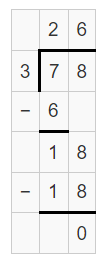
Question 2.
James, Kendra, Nick, and Natasha spent $56.00 to buy a present for their Aunt Jane. If they all contributed the same amount, how much did each person contribute?
Answer:
Each person will contribute $14.
Explanation:
Given that James, Kendra, Nick, and Natasha spent $56.00 to buy a present for their Aunt Jane and if they all contributed the same amount, so each person will contribute 56÷4 which is $14 each.
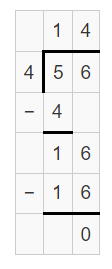
Question 3.
Students at Shoreham School held a bake sale to raise money to buy books. They earned $90. If five classes share the money equally, how much will each class get?
Answer:
Each class will get $18.
Explanation:
Given that students at Shoreham School held a bake sale to raise money to buy books and they earned $90. If five classes share the money equally, so each class will get $90÷5 which is $18.

Question 4.
Morgan had $120 in his bank account. He took out half the money and spent it on books. If each book cost $15, how many books did he buy?
Answer:
The number of books is 8 books.
Explanation:
Given that Morgan had $120 in his bank account and he took out half the money and spent it on books. As each book cost $15, so the number of books he bought is $120÷$15 is 8 books.
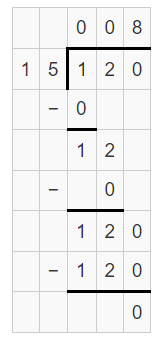
Question 5.
If 12 cans of dog food cost $9.50, how much would 6 cans cost?
Answer:
The cost of 6 cans will be $4.75.
Explanation:
Given that 12 cans of dog food cost $9.50. So each can costs $9.50÷12 which is 0.791. So 6 cans will costs 0.791×6 which is $4.75.
Question 6.
Tanya and three friends have saved $75 to help protect the pandas. If they each gave the same amount, how much money did each person contribute?
Answer:
Each person contribute $18.75.
Explanation:
Given that Tanya and three friends have saved $75 to help protect the pandas. If they each gave the same amount, so each person contributes $75÷4 which is $18.75.

Question 7.
Five friends shoveled snow from people’s driveways. They charged $4.00 per driveway. At the end of the month, they divided the money equally and each got $24. How many driveways did they shovel?
Answer:
30 driveways they shovel.
Explanation:
Given that five friends shoveled snow from people’s driveways and they charged $4.00 per driveway. As they divided the money equally and each got $24. So the total money will be $24×5 which is $120. As they charged $4.00 per driveway, so the number of driveways will be $120÷4 which is 30 driveways they shovel.
Find or Write the Matching Equation
Question 1.
Draw a line from each problem situation to the equation that best matches it.

Answer:
Here, we have drew a line from each problem situation to the equation that best matches it.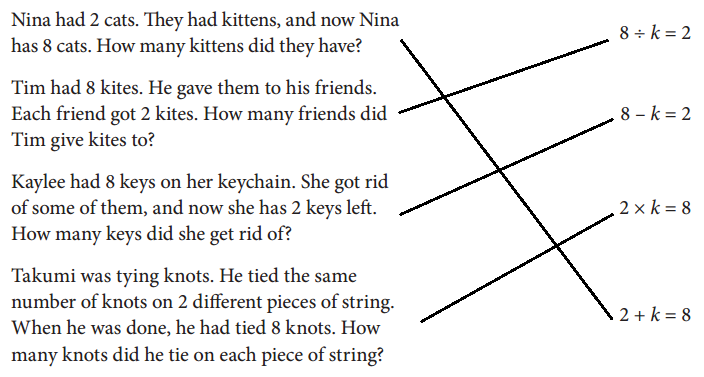
Explanation:
Here, Nina had 2 cats and kittens, now Nina had 8 cats. So the equation for number of Kittens will be 2+k = 8.
Here, Tim had 8 kites and each friend got 2 kites. So the equation for how many friends did Tim give kites is 8÷k = 2.
Here, Kaylee had 8 keys and she has left 2 keys. So the equation for number of keys did she get rid of is 8-k = 2.
Here, Takumi was tying knots and he had tied knots. So the equation will be 2×k = 8.
Question 2.
Write an equation, inequality, or expression to show each situation.
Joe and keira were putting their money together to buy a present for their mom. Joe had $15 and together they had more than $30.
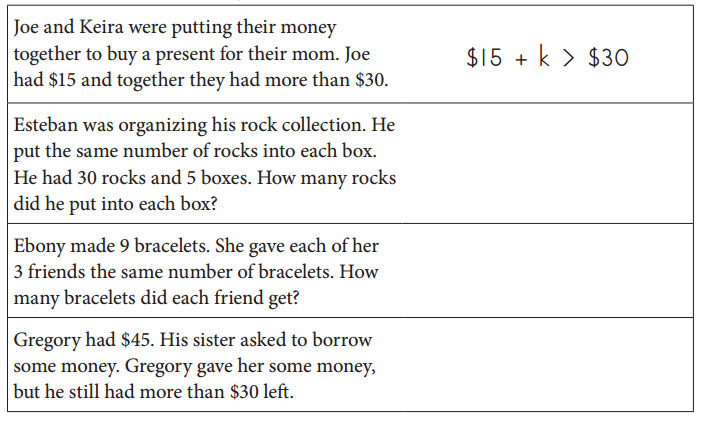
Answer:

Explanation:
Here, Joe had $15 and together they had more than $30. So the equation will be $15+k>$30.
Here, Esteban had 30 rocks and 5 boxes. So the number rocks did he put into each box is 30÷5 = 6.
Here, Ebony made 9 bracelets as she gave 3 friends the same number of bracelets. So the number of bracelets did each friend get is 9÷3 = 3.
Here, gregory had $45 as his sister borrowed some money Gregory still had more than $30. So the equation will be $45-m>$30.
Bridges in Mathematics Grade 4 Student Book Unit 6 Module 1 Session 3 Answer Key
Jeremy’s Birthday
Question 1.
Jeremy and his mom are getting ready for his birthday party. His mom got 31 balloons for the party.
a. If Jeremy divides the balloons evenly among 4 tables, how many balloons will each table get? Show your work.
Answer:
There will be 7 balloons on each table.
Explanation:
Given that Jeremy and his mom are getting ready for his birthday party and his mom got 31 balloons for the party and if Jeremy divides the balloons evenly among 4 tables. So the number of balloons will each table will get is 31÷4 which is approx. 7 balloons on each table.
b. How did you handle the remainder in this problem?
![]() Left it as a whole number.
Left it as a whole number.
![]() Turned it into a fraction.
Turned it into a fraction.
![]() Turned it into a decimal number.
Turned it into a decimal number.
Answer:
Left it as a whole number.
Explanation:
We will left the remainder as a whole number.
c. Explain your choice.
Answer:
We will left the remainder as a whole number because we cannot place the decimal number as a balloon.
Question 2.
Jeremy got $53.00 from his grandparents for his birthday. He wants to spend exactly half of the money on a new toy, and put the other half in his savings account.
a. How much money will Jeremy put into his savings account? Show your work.
Answer:
Jeremy savings will be $26.50.
Explanation:
Given that Jeremy got $53.00 from his grandparents for his birthday and he wants to spend exactly half of the money on a new toy and put the other half in his savings account. So his savings will be $53÷2 which is $26.50.
b. How did you handle the remainder in this problem?
![]() Left it as a whole number.
Left it as a whole number.
![]() Turned it into a fraction.
Turned it into a fraction.
![]() Turned it into a decimal number.
Turned it into a decimal number.
Answer:
Turned it into a decimal number.
Explanation:
We will handle the remainder by turning it into a decimal number.
c. Explain your choice.
Answer:
We will turn the remainder as a decimal number as we can count the remainder.
Bridges in Mathematics Grade 4 Student Book Unit 6 Module 1 Session 4 Answer Key
More Multiplication Strategies
Question 1.
Solve the problems.
1 × 17 = _____________
2 × 17 = _____________
10 × 17 = _____________
9 × 17 = _____________
20 × 17 = _____________
19 × 17 = _____________
18 × 17 = _____________
100 × 17 = _____________
99 × 17 = _____________
98 × 17 = _____________
Answer:
The multiplied products are
17.
34.
170.
153.
340.
323.
306.
1,700.
1,683.
1,666.
Explanation:
Here, we have multiplied to get the product.
1 × 17 = 17.
2 × 17 = 34.
10 × 17 = 170.
9 × 17 = 153.
20 × 17 = 340.
19 × 17 = 323.
18 × 17 = 306.
100 × 17 = 1,700.
99 × 17 = 1,683.
98 × 17 = 1,666.
Question 2.
What do you notice about these problems? How did you solve them?
Answer:
Here, the multiplicator is same and we have solved by using multiplication.
Question 3.
Write and solve your own series of related problems. You can choose any 2-, 3-, or 4-digit number that doesn’t end in a zero to be your multiplier.
1 × _____________ = _____________
2 × _____________ = _____________
10 × _____________ = _____________
9 × _____________ = _____________
20 × _____________ = _____________
19 × _____________ = _____________
18 × _____________ = _____________
100 × _____________ = _____________
99 × _____________ = _____________
98 × _____________ = _____________
Answer:
We have have picked a two digit number 15 and we have got the answer by multiplying the combinations.
15,
30,
150,
135,
300,
285,
270,
1,500,
1,485,
1,470.
Explanation:
Here, we have picked a two digit number 15 and we have got the answer by multiplying the combinations.
1 × 15 = 15.
2 × 15 = 30.
10 × 15 = 150.
9 × 15 = 135.
20 × 15 = 300.
19 × 15 = 285.
18 × 15 = 270.
100 × 15 = 1,500.
99 × 15 = 1,485.
98 × 15 = 1,470.
Question 4.
Now write one more combination using your multiplier that can be solved using the problems you wrote. Find the answer and explain how you got it.
Answer:
We have picked a two digit number 13 and we have got the answer by multiplying the combinations.
13,
26,
130,
117,
260,
247,
234,
1,300,
1,287,
1,274.
Explanation:
We have got the answer by multiplying the combinations.
1 × 13 = 13.
2 × 13 = 26.
10 × 13 = 130.
9 × 13 = 117.
20 × 13 = 260.
19 × 13 = 247.
18 × 13 = 234.
100 × 13 = 1,300.
99 × 13 = 1,287.
98 × 13 = 1,274.
Multiplication Strategies
Question 1.
Solve the problems below. Show your work with numbers, labeled sketches, or words.
a. 1 × 42 = _______________
Answer:
Forty two.
Explanation:
1 × 42 = 42. In words we can write as Forty two.
b. 2 × 42 = _______________
Answer:
Eighty four.
Explanation:
2 × 42 = 84. In words we can write as Eighty four.
c. 10 × 42 = ______________
Answer:
Four hundred twenty.
Explanation:
10 × 42 = 420. In words we can write as Four hundred twenty.
d. 20 × 42 = _____________
Answer:
Eight hundred forty.
Explanation:
20 × 42 = 840. In words we can write as Eight hundred forty.
e. 5 × 42 = ______________
Answer:
Two hundred ten.
Explanation:
5 × 42 = 210. In words we can write as two hundred ten.
f. 15 × 42 = _______________
Answer:
Six hundred thirty.
Explanation:
15 × 42 = 630. In words we can write as six hundred thirty.
Question 2.
Choose problem d, e, or f. What strategies and models did you use to solve it?
Answer:
We have used multiplication to solve the problems d, e, f.
Question 3.
Edie says she can solve 27 × 99 by solving 27 × 100 and then taking away 1 × 27. Do you agree or disagree? Explain.
Answer:
Yes, I do agree.
Explanation:
Given that Edie says she can solve 27 × 99 by solving 27 × 100 and then taking away 1 × 27. Yes, I do agree this. As 27 × 100 is 2,700 and 27 × 99 is 2,673. So by taking off 27 from 2,700 we will get 2,700-27 which is 2,673.
Question 4.
What multiplication combinations might help you solve 63 × 99?
Answer:
The combination will be 77×81.
Explanation:
The combinations that might help to solve 63 × 99 is
= (7×9)×(11×9)
= (7×11)×(9×9)
= 77×81
= 6237.
Bridges in Mathematics Grade 4 Student Book Unit 6 Module 1 Session 5 Answer Key
Zinnia’s Garden
Think about the most efficient strategy for each problem. Then show your work using numbers, labeled sketches, or words.
Question 1.
Zinnia is planting her garden. She made 9 rows for carrots. She put 28 carrot seeds in each row. How many carrot seeds did she plant?
Answer:
The number of carrot seeds will be 252 seeds.
Explanation:
Given that Zinnia is planting her garden and she made 9 rows for carrots then she put 28 carrot. So the number of carrot seeds did she planted is 28×9 which is 252 seeds.
Question 2.
Zinnia has 15 pots for flowers. She planted 12 flower seeds in each pot. How many flower seeds did she plant?
Answer:
The number of flower seeds 180 flower seeds.
Explanation:
Given that Zinnia has 15 pots for flowers and she planted 12 flower seeds in each pot. So the number of flower seeds did she planted is 15×12 which is 180 flower seeds.
Question 3.
Zinnia has 13 rows for tomatoes. She planted 29 tomato seeds in each row. How many tomato seeds did she plant?
Answer:
The number of tomato seeds will be 377 seeds.
Explanation:
Given that Zinnia has 13 rows for tomatoes and she planted 29 tomato seeds in each row. So the number of tomato seeds she will be planting is 13×29 which is 377 tomato seeds.
Question 4.
CHALLENGE Zinnia planted 108 cucumber seeds in 6 different pots. How many cucumber seeds are in each pot?
Answer:
The number of cucumber seeds in each pot is 18 seeds in each pot.
Explanation:
Given that Zinnia planted 108 cucumber seeds in 6 different pots. So the number of cucumber seeds are in each pot is 108÷6 which 18 seeds in each pot.
Bridges in Mathematics Grade 4 Student Book Unit 6 Module 1 Session 6 Answer Key
More Sports Challenges
For each problem:
- Decide if the problem is best solved using multiplication or division.
- Write an equation with a letter to stand for the unknown number.
- Use a ratio table or a labeled area model to solve it. Show all of your work.
Question 1.
Alexandra brought water for her hockey team. There are 14 players on her team and she brought 24 ounces of water for each. How many ounces of water did she bring?
Equation: ___________________
Answer:
The number of ounces of water did she bought is 336 ounces of water.
Explanation:
Given that Alexandra brought water for her hockey team and there are 14 players on her team and she brought 24 ounces of water for each. So the number of ounces of water did she bought is 14×24 which is 336 ounces of water.
Question 2.
Mr. White, the gym teacher at Kennedy School, is planning Field Day for his students. He wants to organize the 280 students into teams of 8 for the different events. How many teams can he make?
Equation: ___________________
Answer:
The number of teams he can make is 35 teams.
Explanation:
Given that the gym teacher at Kennedy School, is planning Field Day for his students and he wants to organize the 280 students into teams of 8 for the different events. So the number of teams he can make is 280÷8 which is 35 teams.
Question 3.
CHALLENGE Sasha’s big sister is a long-distance runner and is participating in a marathon today. Sasha is helping at one of the stations along the race course that provides runners with water. So far, 129 runners have stopped to get water at Sasha’s station. 75 of them each got 12 ounces of water. The others each got 18 ounces of water. How many ounces of water has Sasha given out so far today?
Equation: ___________________
Answer:
The equation will be 900+972 = 1,872 ounces.
Explanation:
Given that 129 runners have stopped to get water at Sasha’s station and 75 of them each got 12 ounces of water which is 75×12 = 900 ounces and others which 129-75 which is 54 and each got 18 ounces of water which is 18×54 = 972 ounces. So the total ounce of water did Sasha gave today is 900+972 which is 1,872 ounces.
Question 4.
CHALLENGE There are 8 ounces in a cup. How many cups of water has Sasha given out so far today?
Equation: ___________________
Answer:
There will be 234 cups.
Explanation:
As there are 8 ounces in a cup, so the number of cups for 1,872 ounces it will be 1,872÷8 which is 234 cups.
More Multiplication Strings
Question 1.
a. Find the product on the left side of the page. Then use the information to find the products on the right side of the page.
1 × 34 = _______________
2 × 34 = _______________
10 × 34 = _______________
20 × 34 = _______________
3 × 34 = _______________
5 × 34 = _______________
30 × 34 = _______________
15 × 34 = _______________
Answer:
We have got the answer by multiplying the combinations.
1 × 34 = 34.
2 × 34 = 68.
10 × 34 = 340.
20 × 34 = 680.
3 × 34 = 102.
5 × 34 = 170.
30 × 34 = 1,020.
15 × 34 = 1,700.
b. Find the product shown below. Explain how you got your answer.
40 × 34 = _______________
Answer:
40 × 34 = 1,360.
Explanation:
Here, we will multiply 4×34 which is 136. So 40 × 34 which is 1,360.
Question 2.
a. Write and solve your own series of related problems. You can choose any 2-, 3-, or 4-digit number that doesn’t end in a zero to be your multiplier.
1 × ____________ = _____________
2 × ____________ = _____________
10 × ____________ = _____________
20 × ____________ = _____________
3 × ____________ = _____________
5 × ____________ = _____________
30 × ____________ = _____________
15 × ____________ = _____________
Answer:
We have chosen 2 digit number 14 and we have got the answer by multiplying the combinations.
14,
28,
140,
280,
42,
70,
420,
210.
Explanation:
Here, we have chosen 2 digit number 14 and we have got the answer by multiplying the combinations.
1 × 14 = 14.
2 × 14 = 28.
10 × 14 = 140.
20 × 14 = 280.
3 × 14 = 42.
5 × 14 = 70.
30 × 14 = 420.
15 × 14 = 210.
b. Now write one more combination using your multiplier that can be solved using the problem you wrote. Find the answer and explain how you got it.
_____________ × ____________ = _____________
Answer:
20 × 16 = 320.
Explanation:
Let the combination be 20 × 16. So we will multiply 2 × 16 which is 32. So 20 × 16 will be 320.
Bridges in Mathematics Grade 4 Student Book Unit 6 Module 1 Session 7 Answer Key
The Slug’s Lettuce Garden
Look at the numbers in each problem before you begin to solve it. Think about which strategy would be the most efficient. Then solve the problem and show your work using numbers, labeled sketches, or words.
Question 1.
Last spring the Slug family decided to plant a lettuce garden. They marked off an area of 25 by 56 centimeters for their garden, and then they went to the Slug Garden Center and got 1,200 tiny lettuce plants. If each lettuce plant needs exactly 1 square centimeter of growing space, will they have enough room for all 1,200 plants?

Answer:
Yes, they have enough room for all 1,200 plants.
Explanation:
Given that the marked off an area of 25 by 56 centimeters for their garden which is 25×56 =1,400 sq cm, and then they went to the Slug Garden Center and got 1,200 tiny lettuce plants. As each lettuce plant needs exactly 1 square centimeter of growing space, so they have enough room for all 1,200 plants.
Question 2.
The Slug family also wanted to plant tiny carrots. They marked off an area that was 26 by 32 centimeters for a carrot garden. Tiny carrots also need 1 square centimeter of growing space. How many tiny carrots can they plant in their tiny carrot garden?
Answer:
The number of carrots can be planted is 832 carrots.
Explanation:
Given that the Slug family marked off an area that was 26 by 32 centimeters for a carrot garden and tiny carrots also need 1 square centimeter of growing space. So the number of carrots can be planted will be 26×32 which is 832 carrots.
Question 3.
Solve each problem using a strategy or combination of strategies that makes your work as easy as possible. Show all your work.
a.

Answer:
39×22 = 858.
Explanation:
Here, we have used standard algorithm strategy to multiply 39×22 which is 858.
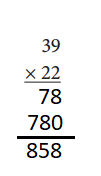
b.

Answer:
642×5 = 3,210.
Explanation:
Here, we have used standard algorithm strategy to multiply 642×5 which is 3,210.

c.
![]()
Answer:
55×18 = 990.
Explanation:
Here, we have used partial product strategy to multiply 55×18 which is
55×8 = 440
55×1 = 55
55+440 = 990.
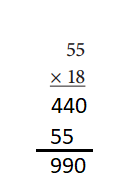
Question 4.
CHALLENGE Write and solve a multiplication problem that looks hard but is actually easy if you use the doubling & halving strategy.
Answer:
25×12 = 300.
Explanation:
It looks hard to multiply 25×12, so by doubling and halving strategy the multiplication will be easy. So we will double 25 which is 25+25 = 50 and we will half 12 to 6. So the multiplication will be 50×6 which is 300.
Question 5.
CHALLENGE Write and solve a multiplication problem that looks hard but is actually easy if you use the Five is Half of Ten strategy.
Answer:
48×5 = 240.
Explanation:
It looks hard to multiply 48×5, so by Five is Half of Ten strategy the multiplication will be easy. So
= (48×10)÷2
= 480÷2
= 240.
Baking Fun
Question 1.
Sara and her 3 friends baked cookies last Saturday. By the end of the afternoon, they had made 7 dozen cookies.
a. If they put 50 of the cookies in the freezer for the bake sale next week, and split the rest evenly among themselves to take home, how many cookies will each of the 4 friends get? Show your work.
Answer:
Each member will get 8 cookies.
Explanation:
Given that Sara and her 3 friends baked cookies last Saturday, by the end of the afternoon, they had made 7 dozen cookies which is 7×12 = 84. If they put 50 of the cookies in the freezer for the bake sale next week, and split the rest evenly among themselves which is 84-50 = 34. So the number of cookies will each of the 4 friends get will be 34÷4 which is 8.5.
b. How did you handle the remainder in this problem?
![]() Left it as a whole number.
Left it as a whole number.
![]() Turned it into a fraction.
Turned it into a fraction.
![]() Turned it into a decimal number.
Turned it into a decimal number.
Answer:
Left it as a whole number.
Explanation:
We will left the remainder as a whole number.
c. Explain your choice.
Answer:
We will left the remainder as a whole number because we cannot place the decimal number as a cookie.
Question 2.
The butter for the cookies cost $3.50. The chocolate chips cost $4.50. The raisins cost $2.00. Sara’s mom donated the rest of the ingredients.
a. If the 4 friends split the cost of the butter, chocolate chips, and raisins evenly, how much money did each friend have to pay?
Answer:
Each friend shares $2.5.
Explanation:
Given that 4 friends split the cost of the butter, chocolate chips, and raisins evenly which is $3.50+$4.50+$2.00 = $10. So each friend shares $10÷4 which is $2.5
b. How did you handle the remainder in this problem?
![]() Left it as a whole number.
Left it as a whole number.
![]() Turned it into a fraction.
Turned it into a fraction.
![]() Turned it into a decimal number.
Turned it into a decimal number.
Answer:
Turned it into a decimal number.
Explanation:
We will handle the remainder by turning it into a decimal number.
c. Explain your choice.
Answer:
We will turn the remainder as a decimal number as we can count the remainder.